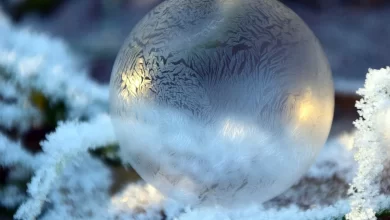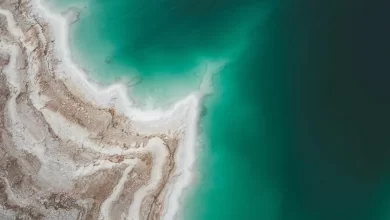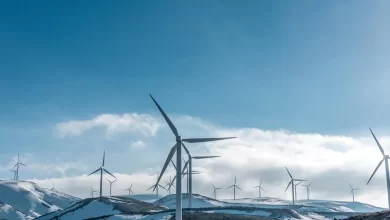Ice is a type of snow. Snow is formed when water in the atmosphere freezes. Snow melts and turns into liquid water at the freezing point of water (0° Celsius, 32° Fahrenheit). Snow can melt quickly and turn into water vapor at times.
- When tiny ice crystals in clouds bind together, snowflakes are formed. If enough crystals form a clump, they’ll become heavy enough to fall on the surface of the earth. Snow forms when temperatures are low, and there is moisture in the atmosphere, which are in the form of tiny ice crystals.
- Snow is translucent and not white. Snow looks white to the human eyes because the visible light is white. Most all of the visible light that hits the snow or ice surface is reflected back without any particular preference for a single color.
- Dirty snow melts quicker than clean snow. It is due to the fact that dirty snow absorbs more energy from the sun.
- All snowflakes are comprised of six sides; the molecules in ice crystals bind to one another in a hexagonal structure, an arrangement that allows water molecules – each with one oxygen and two hydrogen atoms that form together in the most efficient way.
- Dirty snow melts quicker than clean snow. It is due to the fact that dirty snow absorbs more energy from the sun.
- An inch of snow falling evenly on 1 acre of land is equivalent to about 2,715 gallons of water.
- The world record for most snowfall in one year is held by Mount Baker, which lies in the Washington State of United States. The Mount Baker Ski Area reported 1,140 inches (29 meters) of snowfall in the 1998-99 winter season.
- The heaviest snowfall ever recorded in a 24-hour period is in the Capracotta city of Italy. Over 100 inches of snowfall happened in just 18 hours in the March month of 2015.
- There are seven main snow crystal types: plates, stellar crystals, columns, needles, spatial dendrites, capped columns, and irregular forms.
- The Aomori City of Japan is the snowiest place on our beloved planet earth, receiving around 312 inches of snowfall every year.
- Snowflakes fall from the sky at a rate of 1-6 feet per second in all conditions. Even during high storms, snowflakes still fall in this range of speed.
- If the temperature during snowfall is well below the freezing point, the snow has a rather low density. Snow falling at higher temperatures usually has a higher density. Strong winds make break up the snow crystals, and the snow cover becomes more densely packed.
- New snow is comprised of a high percentage of air trapped among the snow crystals. Since the air can barely move, heat transfer is greatly decreased. Fresh and uncompacted snow is comprised of 90 to 95 percent trapped air.
- Each winter, there are about a septillion (trillion) snowflakes that fall on the soil of the united states.
- A snowflake 15 inches in diameter and 8 inches thick measured at Fort Keogh, Montana, in 1887, holds the record of being the biggest snowflake in the recorded history.
- Chionophobia is the type of phobia that is in people who are intensely scared of snow.
References
- Wikipedia-Snow
- Britannica-Snow
- Nsidc.org(Snow is not white in actual)
- Earthobservatory.nasa.gov(Snow reflects sunlight, dirty snow melts faster)
- Metoffice.gov.uk(snowflakes are comprised of six sides)
- Usgs.gov(Snow on 1 acre of land)
- Cnn.com(Heaviest snowfall ever recorded)
- Dickinsoncountyconservationboard.com(Snowflakes speed of falling from the sky)
- Nsidc.org(Snow is comprised of)
- Chicagotribune.com(Biggest snowflake recorded)






